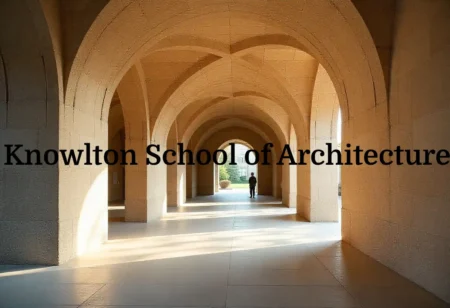Picture walking through rows of century-old doors, each with stories carved into their wood grain. Vintage light fixtures hang overhead, casting shadows that bring history to life. Earthwise Architectural Salvage Seattle has been preserving the city’s architectural past since 1992, transforming demolition waste into design treasures. This isn’t just shopping. It’s time travel through Seattle’s built environment.
Your home renovation doesn’t need to cost the earth. Located at 3447 4th Avenue S, this salvage warehouse connects builders, homeowners, and contractors with materials that would otherwise fill landfills. You get unique pieces with character. The planet gets a break from manufacturing new materials.
What You’ll Find at Earthwise Architectural Salvage Seattle
This article covers everything you need to know about earthwise architectural salvage seattle. You’ll discover what makes this location special, what materials you can find, and how to shop successfully. We’ll also explain the environmental impact and practical tips for your next project.
Featured Snippet: Quick Answer
Earthwise Architectural Salvage Seattle is a 30-year-old salvage warehouse at 3447 4th Ave S offering reclaimed doors, windows, lighting, hardware, lumber, and architectural antiques. Open daily 9:30 AM to 5:30 PM, it helps preserve Seattle’s history while providing cost-effective alternatives to new building materials.
Inside the Seattle Warehouse
The Seattle location features both indoor and outdoor sections packed with salvaged building materials. Walk through the enclosed warehouse and you’ll find organized sections of doors, windows, molding, cabinets, lighting fixtures, and hardware. Step outside to discover larger architectural elements waiting for their next home.
The inventory changes constantly. Each hinge, beam, and banister tells a story of design, industry, and a city constantly remaking itself. What you see today might be gone tomorrow, replaced by new arrivals from recent salvage projects across the region.
Materials Available
| Category | Examples | Typical Uses |
|---|---|---|
| Doors | Vintage solid wood, French doors, barn doors | Interior/exterior entrances, room dividers |
| Windows | Stained glass, double-hung, casement | Natural light, architectural features, art projects |
| Lighting | Chandeliers, sconces, industrial fixtures | Ambient lighting, statement pieces |
| Hardware | Hinges, doorknobs, handles, locks | Restoration projects, cabinet updates |
| Lumber | Reclaimed beams, flooring, dimensional lumber | Structural elements, custom furniture, accent walls |
| Architectural Elements | Pillars, wrought iron, mantels | Focal points, garden features, period restoration |
What Sets This Location Apart
Earthwise has over 30 years of salvage experience and recognizes the importance of keeping materials out of landfills. The staff understands market demands and can help you identify whether specific materials suit your project. They’re not just selling old stuff. They’re matching history with vision.
The warehouse operates differently than typical home improvement stores. You need to hunt for treasures. Measurements matter. Flexibility helps. But the reward is finding something truly unique that new materials can’t replicate.
The Origin Story
Founder Kurt Petrauskas started Earthwise after witnessing demolition industry materials headed to landfills. He knew a better solution existed. So he began rescuing architectural pieces, lighting, and hardware, selling them to customers who valued craftsmanship and history.
The business grew from that simple observation. What started as one person’s mission became a regional force for material reuse. The company expanded to four locations across Washington, opening a Tacoma store in 2012, an Aberdeen location in 2018, and a Kenmore site.
Why Choose Salvaged Materials
Environmental Benefits
Construction waste creates massive problems. Construction and demolition debris accounts for one-third of Seattle’s total landfill waste. Salvage directly addresses this issue by giving materials a second life.
Consider the manufacturing process for new materials. Trees get cut down. Metal gets mined and processed. Plastic comes from petroleum. Each step consumes energy and produces emissions. Salvaged materials skip these steps entirely.
Cost Savings
Budget matters in any renovation project. Salvaged materials typically cost 30-70% less than new equivalents. A solid wood door that might cost $800 new could run $250-400 used. Vintage light fixtures often beat modern prices while offering superior craftsmanship.
The savings multiply across an entire project. Kitchen cabinets, flooring, trim work, hardware—each category offers opportunities to reduce costs without sacrificing quality.
Character and Quality
These materials are well-crafted and offer a cost-effective alternative to buying new. Old-growth lumber provides density and stability that young trees can’t match. Hardware built 80 years ago often outlasts modern alternatives.
Each piece carries history. A door from a 1920s craftsman home brings architectural detail that cookie-cutter replacements lack. Stained glass windows create ambiance that no contemporary fixture can duplicate.
Shopping Tips and Best Practices
Before You Visit
Measure everything twice. Know your door frame dimensions, window rough openings, and ceiling heights. Bring a tape measure, notepad, and photos of your space. Salvaged materials rarely come in standard sizes.
Research your project needs. Understand whether you need exterior or interior doors, what window styles complement your home, and which hardware finishes match your design vision.
Check the website for recent inventory updates. The selection changes weekly as new salvage projects deliver materials and customers purchase items.
During Your Visit
Arrive early for the best selection. Serious shoppers know that popular items move quickly. Weekday mornings typically offer quieter browsing conditions than Saturday afternoons.
Inspect items carefully. Look for structural soundness, not just cosmetic appeal. Check doors for warping, windows for broken seals, and hardware for functionality. Most sales are final, so due diligence matters.
Ask staff for guidance. They know the inventory and can suggest alternatives if your first choice doesn’t work. They can also estimate whether specific items will fit your project.
Common Questions
Q: Can I special order specific items? No, inventory depends on current salvage projects. Call ahead to check availability.
Q: Does Earthwise offer delivery services? Contact the store directly about delivery options for large items.
Q: Are returns accepted? Sales policies vary by item type. Ask before purchasing.
Q: Can professionals access trade pricing? Contractors and designers should inquire about volume discounts directly.
Q: Does the store buy materials from individuals? Yes, Earthwise purchases salvageable materials from demolition and renovation projects.
Beyond Seattle: Other Locations
Earthwise operates locations in Tacoma, Aberdeen, and Kenmore, each with unique inventory reflecting their regional salvage operations. The Tacoma location opened in 2012, expanding access to architectural salvage in South Sound. Aberdeen followed in 2018, serving the coastal community.
The company plans to open a Salvage Lumber Warehouse in SODO to the public by late 2025, further expanding capacity for reclaimed wood products.
The Bigger Picture: Salvage in Seattle
Seattle takes building material reuse seriously. Several jurisdictions require salvage assessments as part of the permitting process for certain remodels and demolitions. The City of Seattle, Shoreline, Redmond, and Kenmore all participate in this program.
Historic Seattle featured Earthwise in their Industrial Legacy program series, highlighting how salvage serves as both preservation and sustainability. The event demonstrated salvage’s role in the modern preservation movement.
Multiple salvage operations serve the region, creating a robust market for used building materials. This competition benefits consumers through better prices and selection while keeping more materials out of landfills.
Real-World Applications
Homeowners use salvaged materials for countless projects. Kitchen remodels incorporate vintage cabinets and hardware. Bathroom updates feature salvaged lighting and mirrors. Living spaces gain character through reclaimed wood accent walls and architectural details.
Contractors find salvage particularly valuable for historic restoration work. Matching original materials maintains authenticity while meeting building codes. A 1910 Victorian renovation needs period-appropriate elements that salvage yards provide.
Artists and designers source materials for creative projects. Stained glass becomes art installations. Old doors transform into tables. Architectural fragments inspire sculpture. The possibilities extend far beyond standard construction applications.
Planning Your Project
Start with realistic expectations. Salvaged materials require more planning than ordering from a catalog. You might need to visit multiple times to find everything. Dimensions might not match perfectly. Some adaptation becomes necessary.
Build flexibility into your design. Rather than demanding specific measurements, work with what’s available. A door slightly wider than planned might actually improve your layout. That unique light fixture could become a focal point worth designing around.
Budget time for cleaning and preparation. Salvaged materials often need paint stripping, hardware replacement, or minor repairs. Factor these tasks into your project timeline and budget.
Working with Professionals
Many contractors embrace salvaged materials once they understand the benefits. Some specialize in restoration work using reclaimed elements. Others appreciate the cost savings for budget-conscious clients.
Communicate your salvage plans early in the design process. Architects and designers can incorporate found materials into their plans rather than treating them as afterthoughts. This approach produces better results and fewer complications during construction.
Verify that salvaged materials meet current building codes. Most do, but specific applications might require modifications or additional documentation. Your contractor and building inspector provide guidance on compliance issues.
Making It Happen
Earthwise Architectural Salvage operates daily from 9:30 AM to 5:30 PM at 3447 4th Avenue S in Seattle. The warehouse welcomes everyone from professional builders to first-time DIYers. No appointment needed—just show up ready to explore.
Your renovation project holds potential for something special. Something with history. Something that reduces environmental impact while saving money. Salvaged materials deliver all three benefits wrapped in authentic character that manufactured products can’t replicate.
The question isn’t whether salvage makes sense. It’s why more people don’t take advantage of this resource. Walk through those warehouse doors and discover what Seattle’s architectural past can contribute to your future home.






